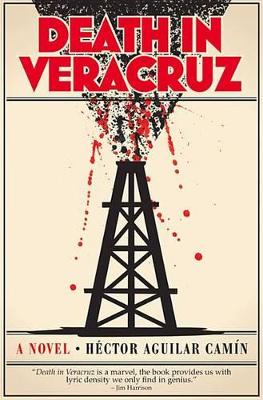Death in Veracruz
Amongst the conflict, graft, corruption and collusion between PEMEX (Mexico’s corrupt government-owned oil company) and the powerful Oil Workers labor union, our narrator (simply called by his nickname, Negro) is an investigative journalist specializing in sticking his nose where it doesn’t belong. His lifelong friend Rojano is an aspiring politician and landowner, married to the stunning and willful Anabela. Negro has been in love with Anabela since his youth, but lost out to Rojano. But he remains in their orbit, as Rojano and Anabel slowly draw him into their schemes to rise in power.
Rojano’s enemy (and simultaneous political sponsor and mentor) is Lazaro Pizarro, a charismatic and ruthless leader in the Oil Worker’s union. Pizarro is rendered by turns philosophical, ruthless, cruel and yet clinically unemotional when ordering deaths. Each of the main characters is wholly believable and mesmerizing, but Pizarro stands center to me. As the leader of the oil workers union, he is trying to build the worker’s paradise in Mexico and will let nothing stand in his way. At the prompting of Rojano, Negro interviews Pizarro, and more or less accuses him of murdering people to advance his cause. Pizzaro’s response:
“Try to understand,” he said in a voice that was barely audible. “Listen to what I’m telling you. People there are dying at the rate of two a day just from drinking mezcal. Have you ever been in one of those jails? I was in the one in Chicontepec last week. One of the inmates had killed his mother. Another a friend he was out drinking with. Another raped his daughter and almost beat her to death. None of them remembered what they’d done. All that death and suffering was pointless. It bore no fruit. Nothing blossomed or contributed to the wellbeing of others. These are the deaths that must be stopped, the barren ones driven by mezcal and ignorance. There are always going to be violent deaths, that’s the law of history. It’s up to us to make sure they’re fertile and creative, that’s all.”
Death in Veracruz is a dark, classic noir, where nobody is who they seem, double crosses are common, and nobody can be entirely trusted. It’s also a love story, an exploration of Mexico’s culture in the ‘60s and ‘70s, and a hell of wild ride. You’re never sure whether you are being told the truth by the author or the characters, or precisely sure what’s actually happened, kind of a Mexican True Detective.
It’s an entirely atmospheric novel; since books and music often go together well, I made a music playlist for you as you read:
https://open.spotify.com/user/viking2917/playlist/7KpyXeNscBSncDNxY520Xe
